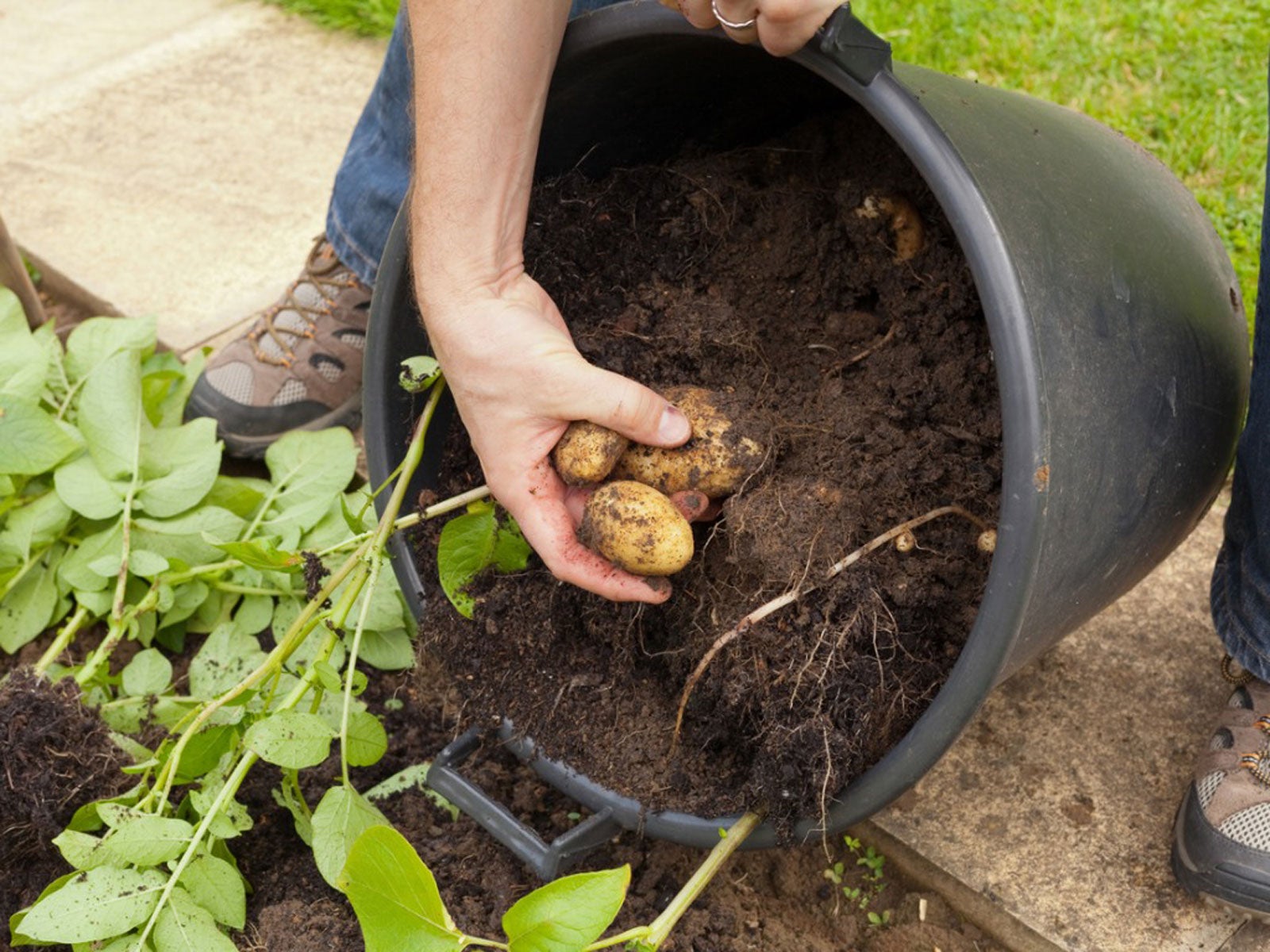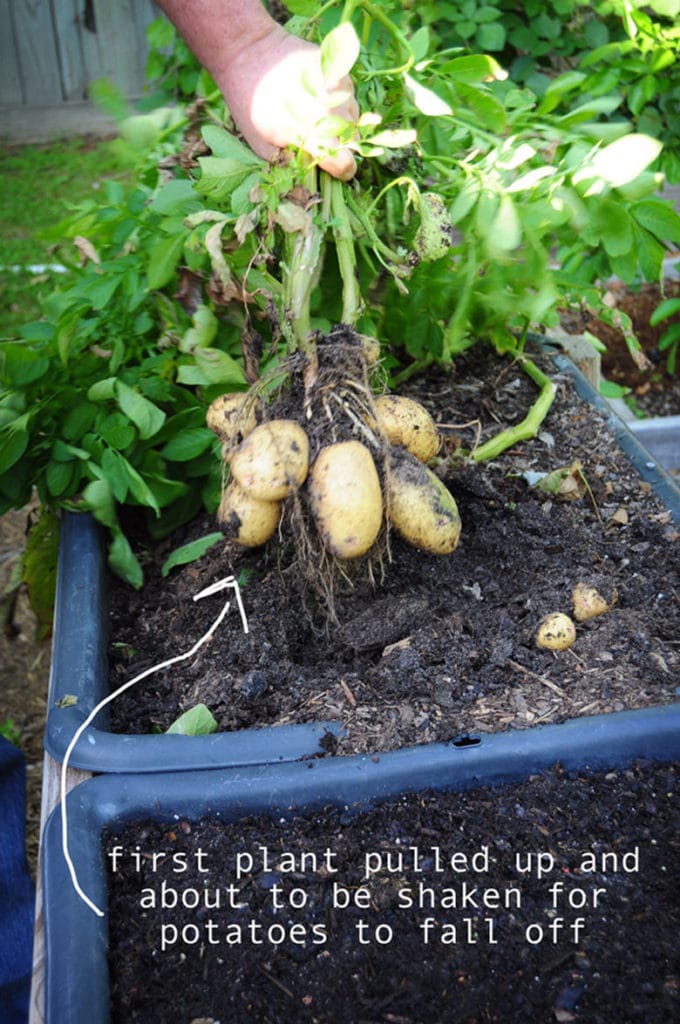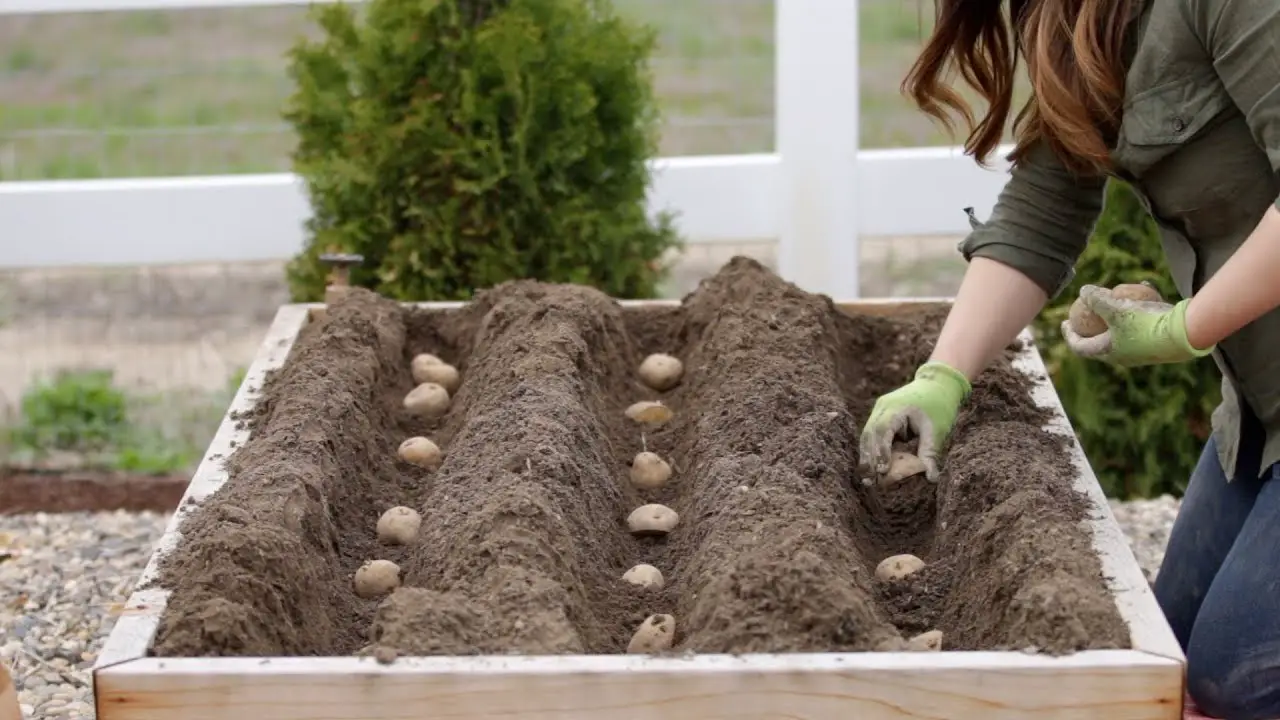Getting Started with Container Potato Gardening
Container gardening has become increasingly popular in recent years, and growing potatoes in planters is a great way to enjoy this hobby. Not only does it save space, but it also allows for better soil quality and improved drainage. To get started with container potato gardening, it’s essential to understand the basic requirements for growing potatoes in containers. These include providing sufficient sunlight, water, and fertilization.
Potatoes need full sun to partial shade, so it’s crucial to place the container in a spot that receives at least 6 hours of direct sunlight per day. Watering is also vital, as potatoes need consistent moisture, especially when they’re producing tubers. A well-draining potting mix and a container with good drainage holes can help prevent waterlogged soil. Fertilization is also necessary, as potatoes are heavy feeders. A balanced fertilizer can be applied at planting time, and a high-phosphorus fertilizer can be used to promote tuber growth.
When it comes to growing potatoes in planters, it’s essential to choose a variety that is well-suited for container growing. Some popular varieties include ‘Nicola’, ‘Charlottes’, and ‘Maris Peer’. These varieties are compact, produce high yields, and are resistant to diseases. By following these basic requirements and choosing the right variety, you can successfully grow potatoes in planters and enjoy a bountiful harvest.
One of the most significant advantages of growing potatoes in planters is the ability to control the soil quality. By using a high-quality potting mix, you can ensure that your potatoes receive the necessary nutrients for optimal growth. Additionally, container gardening allows for better drainage, which can help prevent waterlogged soil and reduce the risk of disease.
Another benefit of growing potatoes in planters is the flexibility it offers. Containers can be moved to different locations, making it easy to adjust to changing weather conditions or to make the most of available sunlight. This flexibility also makes it possible to grow potatoes in small spaces, such as balconies, patios, or rooftops.
Overall, growing potatoes in planters is a fun and rewarding experience that can provide a bountiful harvest. By understanding the basic requirements and choosing the right variety, you can successfully grow potatoes in containers and enjoy the many benefits of container gardening.
Choosing the Right Variety of Potato for Container Growing
When it comes to growing potatoes in planters, selecting the right variety is crucial for a successful harvest. There are several types of potatoes that are well-suited for container growing, each with its own unique characteristics. Some popular varieties include ‘Nicola’, ‘Charlottes’, and ‘Maris Peer’. These varieties are compact, produce high yields, and are resistant to diseases.
‘Nicola’ potatoes are a popular choice for container growing due to their high yield and disease resistance. They have a maturity period of around 100 days and produce large, creamy-white tubers. ‘Charlottes’ potatoes are another popular variety, known for their high yield and resistance to scab. They have a maturity period of around 90 days and produce small to medium-sized tubers.
‘Maris Peer’ potatoes are a popular choice for container growing due to their high yield and resistance to disease. They have a maturity period of around 100 days and produce large, white tubers. These varieties are all well-suited for container growing and can thrive in a variety of conditions.
When selecting a variety of potato for container growing, it’s essential to consider the maturity period, yield, and disease resistance. A variety with a shorter maturity period will be ready to harvest sooner, while a variety with a higher yield will produce more tubers. Disease resistance is also crucial, as it will help prevent common problems such as potato beetles and late blight.
In addition to these popular varieties, there are many other types of potatoes that can be grown in containers. Some other varieties to consider include ‘Pentland Javelin’, ‘Shetland Black’, and ‘Vitelotte’. These varieties offer a range of characteristics, including high yield, disease resistance, and unique flavors and textures.
By selecting the right variety of potato for container growing, you can ensure a successful harvest and enjoy a bountiful crop of delicious potatoes. Whether you’re a seasoned gardener or just starting out, there’s a variety of potato out there that’s perfect for you.
Selecting the Perfect Planter for Your Potato Crop
When it comes to growing potatoes in planters, selecting the right planter is crucial for a successful harvest. The planter should be large enough to accommodate the mature size of the potato plants, with a minimum depth of 6-8 inches. The material of the planter is also important, as it should be durable and able to withstand the elements.
Some popular options for planters include plastic, clay, and fabric. Plastic planters are lightweight and easy to clean, but may not provide the best drainage. Clay planters are more durable and can provide better drainage, but may be heavier and more expensive. Fabric planters, such as the ‘Grow Bag’, are a popular choice for container gardening and can provide excellent drainage and aeration.
Drainage is a critical factor to consider when selecting a planter for growing potatoes. The planter should have drainage holes in the bottom to prevent waterlogged soil and root rot. A planter with good drainage will also help to prevent disease and pests.
Some specific products that are well-suited for growing potatoes in planters include the ‘EarthBox’ and the ‘Grow Bag’. The ‘EarthBox’ is a self-watering planter that provides excellent drainage and aeration, making it ideal for growing potatoes. The ‘Grow Bag’ is a fabric planter that provides excellent drainage and aeration, and is also lightweight and easy to move.
When selecting a planter for growing potatoes, it’s also important to consider the size of the planter. A larger planter will provide more room for the potato plants to grow, but may be more difficult to move and handle. A smaller planter will be easier to handle, but may not provide enough room for the potato plants to grow.
Ultimately, the best planter for growing potatoes will depend on the specific needs and preferences of the gardener. By considering factors such as material, drainage, and size, gardeners can select the perfect planter for their potato crop and enjoy a successful harvest.
Preparing the Soil for Container Potato Growing
When it comes to growing potatoes in planters, the quality of the soil is crucial for a successful harvest. Container potato growing requires a well-draining potting soil that is rich in organic matter and nutrients. A good potting soil should have a pH between 4.5 and 7.0, which is slightly acidic to neutral.
To prepare the soil for container potato growing, you can either purchase a high-quality potting soil or mix your own using a combination of ingredients. A good potting soil mix should include a combination of peat moss, compost, and perlite or vermiculite. Peat moss helps to retain moisture and suppress diseases, while compost provides nutrients and improves soil structure. Perlite or vermiculite helps to improve drainage and aeration.
To mix your own potting soil, start by combining 2 parts of peat moss with 1 part of compost. Add 1 part of perlite or vermiculite to improve drainage and aeration. Mix the ingredients well and adjust the pH as needed. You can also add other ingredients such as worm castings or kelp meal to provide additional nutrients.
It’s also important to note that container potato growing requires a soil that is specifically designed for containers. A soil that is too dense or heavy can cause waterlogging and root rot, while a soil that is too light can cause the plants to dry out too quickly.
Some popular potting soil mixes for container potato growing include Miracle-Gro Potting Soil and Black Kow All Purpose Potting Mix. These mixes are specifically designed for container gardening and provide the necessary nutrients and drainage for healthy potato plants.
By preparing the soil properly, you can provide your potato plants with the best possible start and ensure a successful harvest. Whether you’re using a pre-mixed potting soil or mixing your own, make sure to follow the guidelines above to create a well-draining and nutrient-rich soil that is perfect for container potato growing.
How to Plant Seed Potatoes in Containers
Planting seed potatoes in containers is a straightforward process that requires some basic preparation and attention to detail. To get started, you’ll need to chit the seed potatoes, which involves allowing them to sprout before planting. This step is crucial for promoting healthy growth and maximizing yields.
To chit the seed potatoes, place them in a light, cool place with the “eyes” facing upwards. The eyes are the small buds on the potato that will produce the new plants. Allow the seed potatoes to chit for 2-4 weeks, or until they have developed short, green shoots.
While the seed potatoes are chitting, prepare the soil in your container by filling it with a high-quality potting mix. Make sure the soil is moist but not waterlogged, as this can cause the seed potatoes to rot.
Once the seed potatoes have chitted, it’s time to plant them in the container. Plant the seed potatoes 2-4 inches deep, with the eyes facing upwards. Space the seed potatoes 6-8 inches apart, depending on the variety and the size of the container.
After planting the seed potatoes, cover them with a layer of soil and water gently. Make sure the soil is moist but not waterlogged, and provide the seed potatoes with plenty of sunlight and warmth.
As the seed potatoes grow, you’ll need to add more soil to the container to cover the base of the stems. This will help to produce more tubers and promote healthy growth. You can also add a layer of mulch or straw to the container to retain moisture and suppress weeds.
By following these steps, you can successfully plant seed potatoes in containers and enjoy a bountiful harvest of delicious potatoes. Remember to keep the soil moist, provide plenty of sunlight and warmth, and add more soil to the container as the seed potatoes grow.
Caring for Your Container Potato Crop
Once your seed potatoes are planted, it’s essential to provide them with the right care to ensure a healthy and productive crop. Container potato growing requires regular watering, fertilizing, and pest management to prevent common problems.
Watering is crucial for container potato growing, as the soil can dry out quickly. Check the soil daily, and water when the top 2-3 inches of soil feel dry to the touch. Avoid overwatering, as this can cause the tubers to rot.
Fertilizing is also important for container potato growing. Use a balanced fertilizer that is high in phosphorus, such as 10-20-10, to promote healthy growth and tuber production. Apply the fertilizer according to the manufacturer’s instructions, and avoid overfertilizing, as this can cause more harm than good.
Pest management is another critical aspect of container potato growing. Keep an eye out for common pests such as potato beetles, aphids, and whiteflies. Use organic or chemical controls as needed to prevent infestations and protect your crop.
Monitoring for diseases is also essential for container potato growing. Keep an eye out for common diseases such as late blight, scab, and powdery scab. Use fungicides or other controls as needed to prevent the spread of disease and protect your crop.
Finally, keep the area around your container potato crop weed-free to prevent competition for water and nutrients. Use a mulch or straw to retain moisture and suppress weeds.
By following these care requirements, you can ensure a healthy and productive container potato crop. Remember to water regularly, fertilize as needed, and monitor for pests and diseases to prevent common problems.
Regularly inspect your container potato crop for signs of stress or disease, and take action promptly to prevent the problem from spreading. With proper care and attention, you can enjoy a bountiful harvest of delicious potatoes from your container garden.
Harvesting Your Container-Grown Potatoes
Harvesting your container-grown potatoes is an exciting moment, and it’s essential to do it correctly to avoid damaging the tubers. The timing of the harvest depends on the variety of potato you are growing, but generally, it’s ready to harvest when the plants start to yellow and die back.
Check the size of the tubers by gently digging around the plants with your fingers or a fork. If the tubers are the desired size, it’s time to harvest. If not, wait a few more days and check again.
To harvest your container-grown potatoes, carefully dig around the plants with a fork, being careful not to damage the tubers. Lift the tubers out of the soil, and gently brush off any excess soil.
It’s essential to harvest your container-grown potatoes in the morning, when the soil is cool and the tubers are at their highest water content. This will help to prevent bruising and damage to the tubers.
After harvesting, allow the tubers to dry in a cool, dark place for a few hours. This will help to heal any wounds and prevent rot.
Container-grown potatoes can be harvested in as little as 70 days, depending on the variety. Some popular varieties for container growing include ‘Nicola’, ‘Charlottes’, and ‘Maris Peer’.
When harvesting your container-grown potatoes, be sure to check for any signs of disease or pests. If you notice any problems, take action promptly to prevent the spread of disease and protect your crop.
By following these steps, you can enjoy a bountiful harvest of delicious, container-grown potatoes. Remember to harvest your potatoes at the right time, and handle them carefully to avoid damage.
Troubleshooting Common Problems in Container Potato Growing
While growing potatoes in containers can be a rewarding experience, there are some common problems that can arise. Poor yields, disease, and pests are just a few of the challenges that container potato growers may face. In this section, we’ll discuss some of the most common problems and provide troubleshooting tips and solutions to help you overcome them.
Poor yields can be caused by a variety of factors, including inadequate sunlight, water, or fertilization. To address this issue, make sure your container is receiving at least 6 hours of direct sunlight per day, and that the soil is consistently moist but not waterlogged. Additionally, consider using a balanced fertilizer to provide your potatoes with the necessary nutrients for optimal growth.
Disease is another common problem that can affect container-grown potatoes. Late blight, scab, and powdery scab are just a few of the diseases that can impact potato yields. To prevent disease, make sure to use disease-resistant varieties, and maintain good sanitation practices, such as removing any infected plants or debris from the container.
Pests can also be a problem for container potato growers. Potato beetles, aphids, and whiteflies are just a few of the pests that can impact potato yields. To control pests, consider using organic or chemical controls, such as neem oil or insecticidal soap. Additionally, make sure to inspect your plants regularly to catch any pest problems early.
Other common problems that can arise when growing potatoes in containers include tuber rot, green tubers, and deformed tubers. Tuber rot can be caused by overwatering or poor drainage, while green tubers can be caused by exposure to light. Deformed tubers can be caused by a variety of factors, including inadequate fertilization or poor soil quality.
By being aware of these common problems and taking steps to prevent them, you can enjoy a successful and rewarding container potato growing experience. Remember to monitor your plants regularly, and take action promptly if you notice any problems.
With the right care and attention, container-grown potatoes can be a delicious and rewarding addition to any meal. By following the tips and troubleshooting advice outlined in this article, you can overcome common problems and enjoy a bountiful harvest of delicious potatoes.









